Once my basil plants have officially become small trees (I’m not joking, I’ve seen them get 4-5 feet tall), I like to do a massive harvest and make multiple batches of basil pesto sauce. This delicious sauce is made using toasted pine nuts, Parmigiano Reggiano, fresh sweet basil, and garlic.
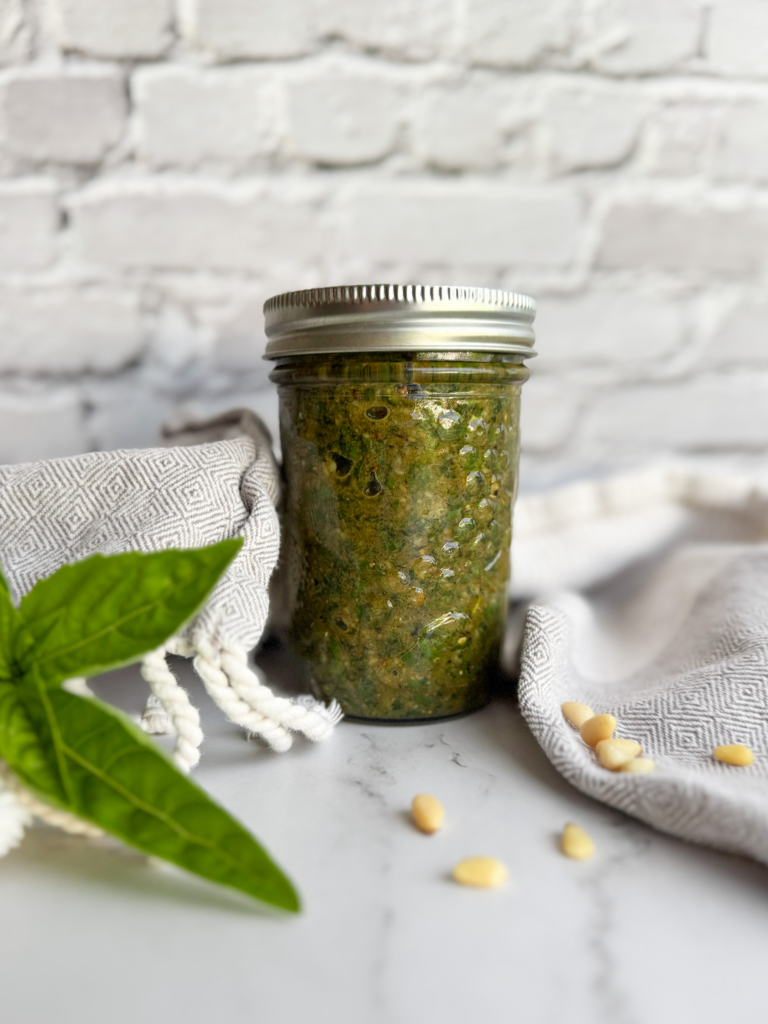
End of summer always happens so quickly in the Okanagan. It’s 30 degrees (C) every day and suddenly within a week or two, nights are cold and days are scarcely reaching 18C. Within 2 weeks, we typically have our first frost. This means it’s time to preserve our most frost-sensitive veggies and herbs.
Since basil is one of the most sensitive to the cold, this chilly weather gets me making multiple batches of this delicious pesto sauce.
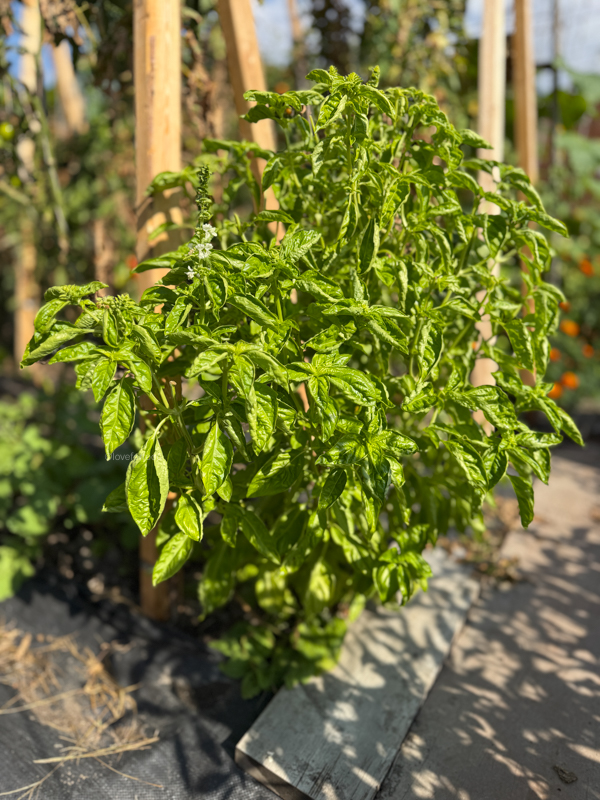
Best Kind of Basil for Pesto
The best variety of basil for pesto is sweet basil, which often have large, broad, shiny leaves that have a ton of flavour. Genovese is a variety of sweet basil that is very popular, but my husband doesn’t like the slight minty-ness of that variety. I like to grow regular sweet basil and Genovese and will throw a few leaves of the Genovese in, up to a 50/50 mix. Mostly I prefer to use the large leaf sweet basil.
Pesto Variations/Substitutions
Pesto is incredible because there’s so many options for substitutions if you have trouble finding ingredients or just want to use something up in the cupboard.
- For Basil: You can substitute parsley, carrot top leaves, cilantro, or even mint! Keep in mind this will change the flavour quite a bit.
- For Pine Nuts: You can really swap in any nut or even seeds. I’ve used walnuts, almonds, and hazelnuts with great success. You could also try cashews or sunflower seeds.
- For Parmesan: Try pecorino romano or nutritional yeast (for a dairy free version) – though start with less nutritional yeast and add more to taste.
- For the Olive Oil: Olive oil is traditional, but you could make this with any neutral or lightly flavoured oil.
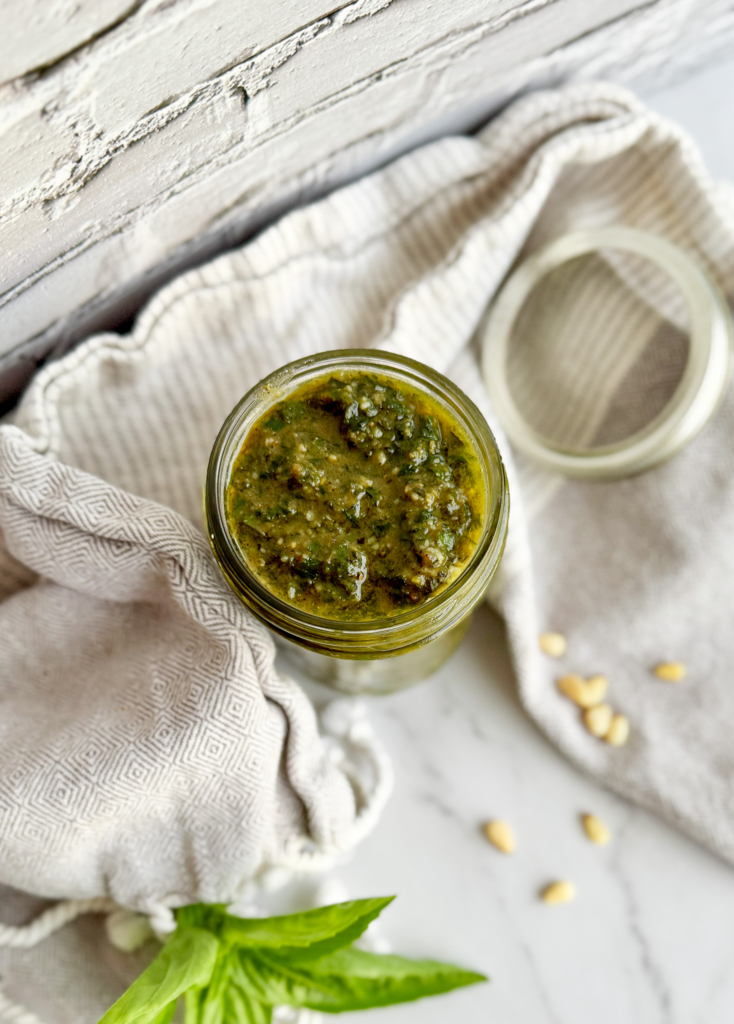
What To Make with Pesto?
Of course one of the most popular uses for pesto is with pasta. Try my Shrimp Pesto Pasta for an easy weeknight dinner using your frozen pesto. Toss with tortellini, coat chicken in it, or try a fancy caprese salad.
How to Make Basil Pesto Sauce:
Pesto is really, very simple! All you need is a food processor (or more traditionally a large mortar and pestle) and a pan to quickly toast the pine nuts.
- Toast the pine nuts until they’re lightly browned, fragrant and have an oily sheen. Remove to a cool bowl and set aside until they’re no longer hot (we don’t want to wilt the basil!)
- Process the Basil and Nuts: Once the nuts are cool enough to handle (they can still be a bit warm), add them to a food processor with a blade attachment along with the fresh basil. Pulse or use a chop setting until the basil leaves are finely chopped.
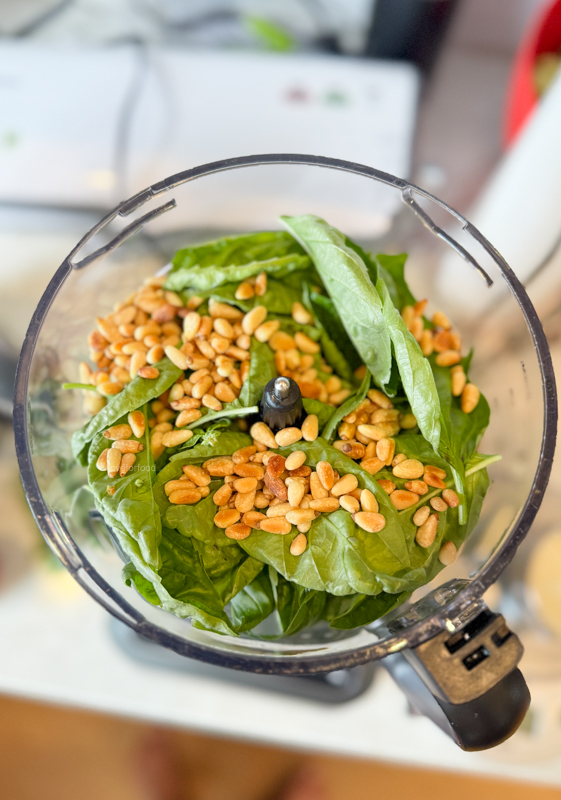
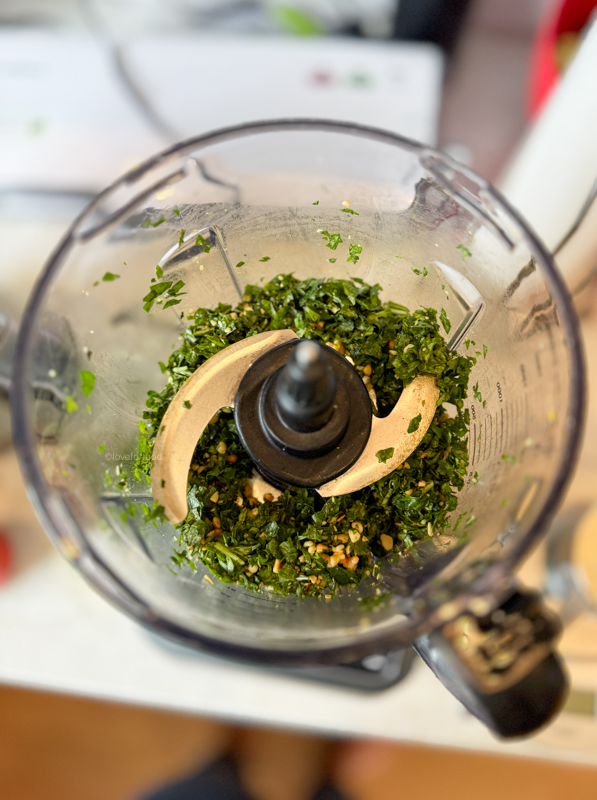
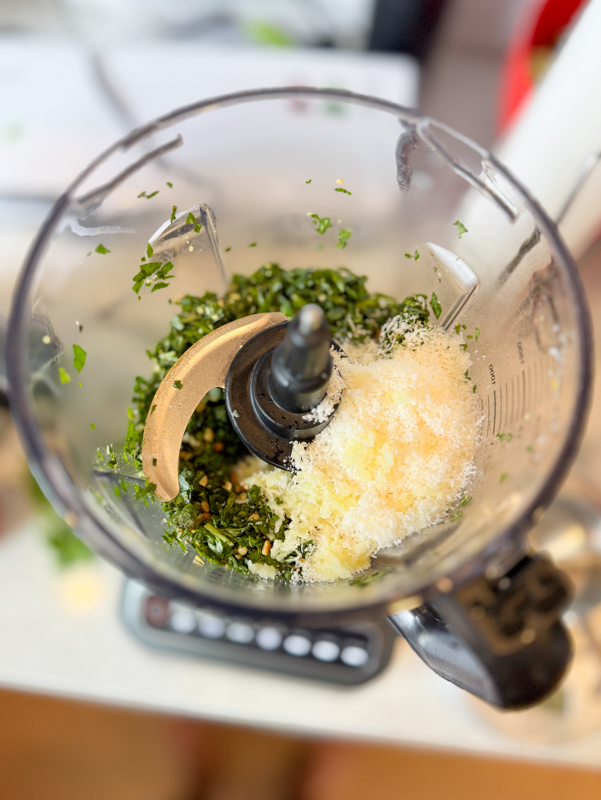
- Blend in the Cheese, Garlic, and Seasoning: Add in the grated parmesan, mined garlic, salt, and pepper. Pulse or use a low speed to roughly chop and blend everything together until it appears more like a paste.
- Drizzle in the Olive Oil: Once the pesto looks like a paste, set the blend speed to low and slowly drizzle in the olive oil to emulsify. This should take 30-60 seconds. Once it is well blended into a sauce, turn it to high for another 15-30 seconds or until desired consistency is reached.
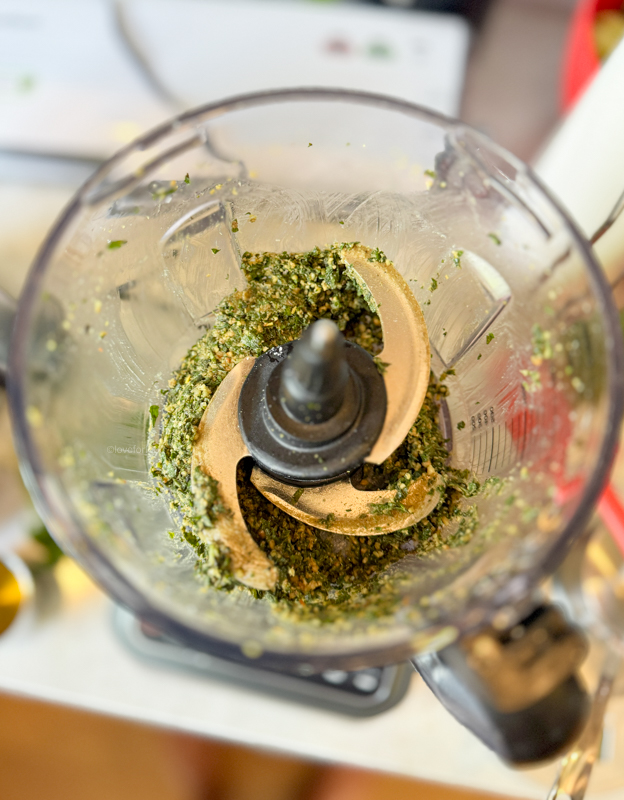
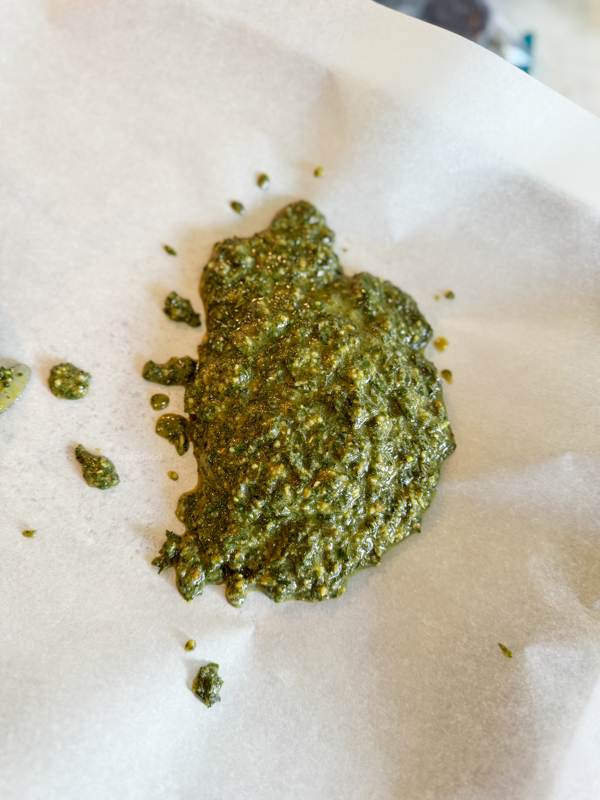
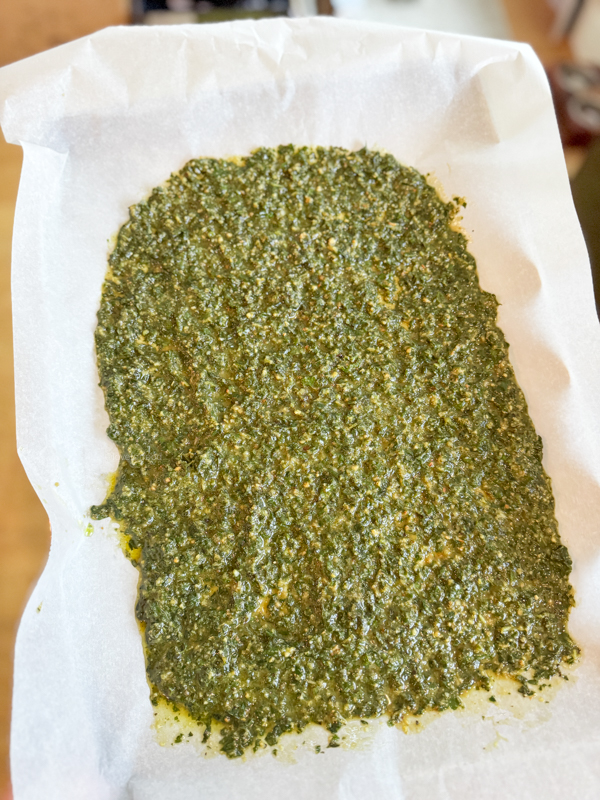
- Serve or Refrigerate: Serve immediately or cover and set aside in the fridge up to a week. Cover with a thin layer of olive oil to prevent oxidation and mold growth.
How to Freeze Pesto/Batch Pesto:
Batch Making: Always make the pesto one batch at a time. If you try making too much your food processor might have a hard time breaking everything down evenly. Two packed cups of fresh basil is a LOT of basil, my 8 cup processor is nearly full!
Freezing Instructions: On a baking sheet, lay down a piece of parchment paper. Evenly spread the pesto on the parchment paper and place in the freezer immediately. Once completely frozen, break or cut into pieces and freeze for up to a year. If making multiple batches, cover with another piece of parchment paper between batches to prevent browning.
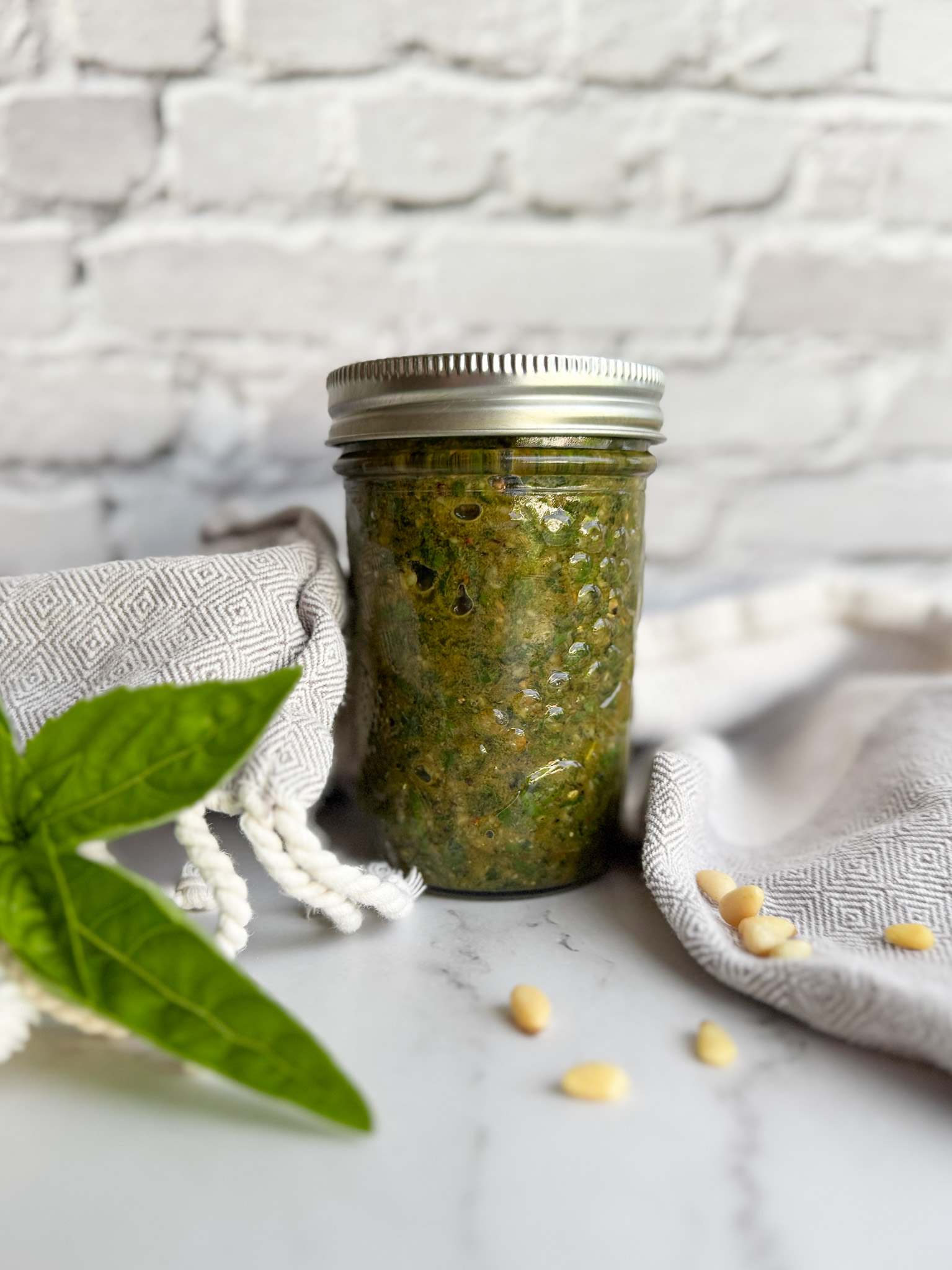
Basil Pesto Sauce
Ingredients
Equipment
Method
- Toast the Pine Nuts: Toast your pine nuts over medium-low to medium heat in a small skillet until lightly browned and fragrant. The oils will begin to shimmer on the exterior and there will be light brown spots on the nuts when they're done. Remove from heat and place the nuts on a clean plate or bowl and let them cool for a few minutes.
- Process the Basil and Nuts: Once the nuts are cool enough to handle (they can still be a bit warm), add them to a food processor with a blade attachment along with the fresh basil. Pulse or use a chop setting until the basil leaves are finely chopped.
- Blend in the Cheese, Garlic, and Seasoning: Add in the grated parmesan, mined garlic, salt, and pepper. Pulse or use a low speed to roughly chop and blend everything together until it appears more like a paste.
- Drizzle in the Olive Oil: Once the pesto looks like a paste, set the blend speed to low and slowly drizzle in the olive oil to emulsify. This should take 30-60 seconds. Once it is well blended into a sauce, turn it to high for another 15-30 seconds or until desired consistency is reached.
- Serve or Refrigerate: Serve immediately or cover and set aside in the fridge up to a week. Cover with a thin layer of olive oil to prevent oxidation and mold growth.
- Freezing Instructions: On a baking sheet, lay down a piece of parchment paper. Evenly spread the pesto on the parchment paper and place in the freezer immediately. Once completely frozen, break or cut into pieces and freeze for up to a year. If making multiple batches, cover with another piece of parchment paper between batches to prevent browning.

Recent Comments